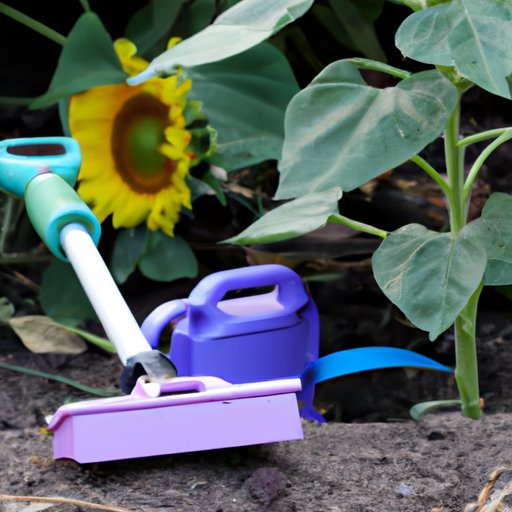
Introduction
It’s easy to get caught up in the excitement of spring planting. But what about those of us who missed the boat on planting sunflowers during the “ideal” season? Don’t worry – there’s still hope! This article will provide a guide to planting sunflowers late in the season and tips for making the most of your latecomer’s garden.
The Last Chance for Sunflowers: A Guide to Late-Season Planting
So, what does it mean to plant sunflowers “late”? Generally, planting sunflowers after mid-July can be considered late. However, this varies depending on your location and climate. It’s important to keep in mind that sunflowers need about 80-100 days to mature, and late planting can impact their growth and flowering.
Don’t fret – there are sunflower varieties that can be successfully planted late in the season. Dwarf varieties and fast-growing hybrids, such as ‘Autumn Beauty’ or ‘Italian White,’ may be your best bet. These varieties have shorter growing seasons and can tolerate cooler temperatures.
When planting sunflowers late in the season, it’s important to follow these steps: prepare the soil, plant the seeds, water the area, and mulch the soil to provide insulation and moisture retention.
Latecomer’s Guide to Growing Sunflowers: Tips and Tricks for Late Planting
When it comes to selecting the right location and soil for late planting, find a spot that receives at least six hours of direct sunlight each day. Sunflowers require well-draining soil, so avoid areas with standing water or compacted soil. Adding compost to the soil before planting can also improve soil quality and support sunflower growth.
Since you’re planting late, you’ll want to promote growth as much as possible. Fertilizing with a high-nitrogen fertilizer, such as blood meal or fish emulsion, can help speed up growth. You can also use a foliar spray to provide additional nutrients and promote healthy foliage.
To maximize sunflower health in late-season conditions, water consistently and avoid letting the soil dry out between watering. Additionally, consider using a support structure such as a stake or trellis to protect your sunflowers from wind damage.
Late to the Game: Maximizing Your Sunflower’s Potential When Planting After the Ideal Dates
One challenge of planting sunflowers late is the possibility of frosts or freezes before the plant has fully matured. To overcome this challenge, you can cover your sunflowers with a frost blanket or cloth to protect them from the elements. Additionally, planting sunflowers in containers can give you more control over their environment and make it easier to protect them from frost or harsh weather.
Despite these challenges, late-season planting can still be successful. Many gardeners have reported success with planting sunflowers as late as September or even October. With the right care and attention, it’s possible to grow healthy and vibrant sunflowers even when planting after the ideal dates.
Sunflowers in September: A Look at Late-Season Planting and How to Make the Most of It
September can be an ideal time to plant sunflowers for several reasons. For one, the cooler temperatures can help to prevent your sunflowers from overheating and wilting. Additionally, the shorter days during this time can be helpful for dwarf varieties that require less direct sunlight. Finally, incorporating sunflowers into your late-season garden design can add a pop of vibrant color and texture to your space.
To ensure optimal sunflower growth in September, make sure to select varieties that can handle the cooler temperatures. Proper soil preparation and fertilization will also be key. Finally, consider using companion planting techniques such as planting fall crops like lettuce or broccoli alongside your sunflowers to maximize garden space and promote plant health.
Breaking the Rules: Late-Season Sunflower Planting and Why It Can Still Be Successful
Who says sunflowers have to be planted early in the season? Late-season sunflower planting can be a fun and experimental way to expand your gardening horizons. There are benefits to planting late, including less competition from pests and diseases and the chance to experiment with different varieties.
Additionally, planting sunflowers late can provide an important food source for birds and other animals during the fall and winter months. Sunflower seeds are a great source of nutrition for birds, and leaving spent sunflower heads in your garden can attract a variety of wildlife.
So, don’t be afraid to try planting sunflowers late this season. Whether you’re a seasoned gardener or just starting out, late-season planting can be a rewarding and fun way to explore your green thumb.
Conclusion
Planting sunflowers late in the season doesn’t have to be a daunting task. With the right knowledge and tools, you can successfully grow vibrant and healthy sunflowers in spite of the late start. Whether you’re looking to experiment with different varieties or maximize your late-season garden space, late-season sunflower planting is a great way to explore all that the gardening world has to offer.





